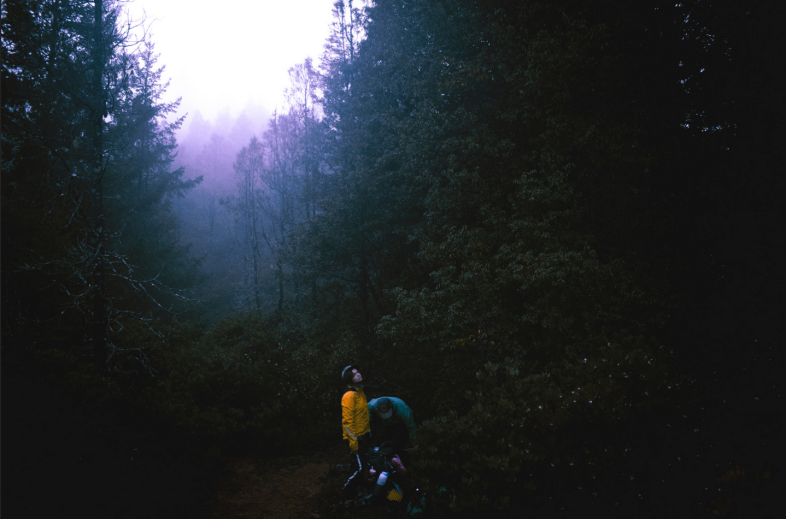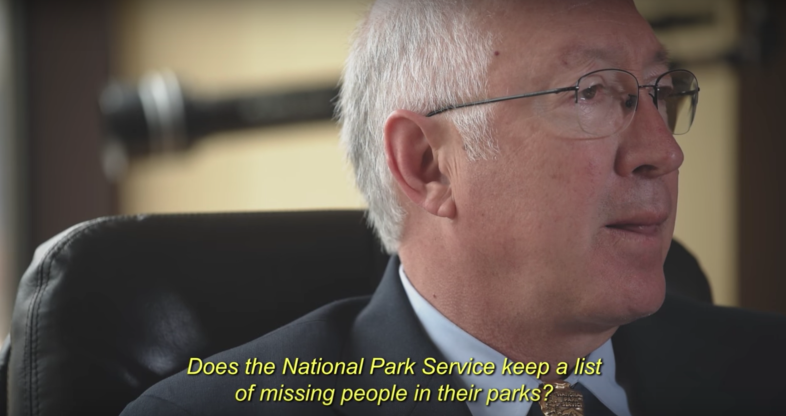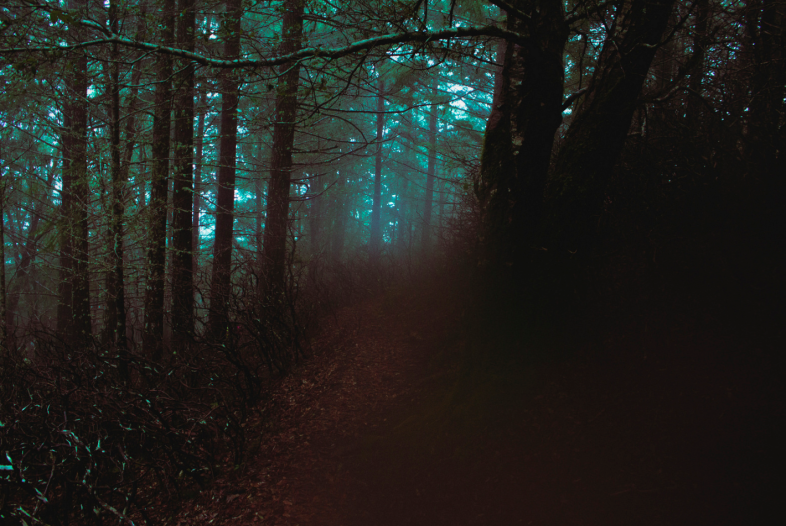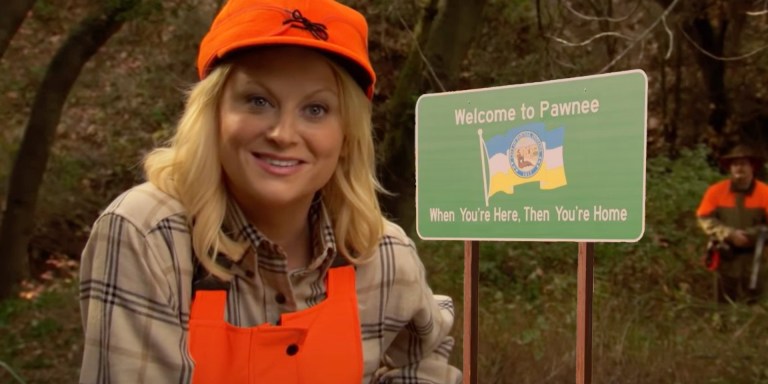
It sounds like an urban legend: an author and former policeman was on vacation when he was approached by two off-duty rangers who asked him to look into the number of people who go missing in the national park system. They were too afraid of retaliation to appear in uniform and asked that the national park they work for and the time period they met the author be kept secret.
The cases he found were strange and numerous enough that the man, David Paulides, has since written six volumes of work documenting the phenomena. The books, called the Missing 411 series, explore what Paulides calls a “mysterious series of worldwide disappearances defying logical and conventional explanations.” While Paulides isn’t the most reputable source (he’s also a cryptozoologist, having spent years researching Bigfoot) but his research raises questions that would make anyone wonder.
For instance, why is something so simple as a list of people currently missing in national parks so elusive?

The national parks service has no database where missing people are tracked across the system. Because of this, no one even knows how many people are currently missing in parks. There’s also the sheer volume of missing persons cases that would qualify as especially “strange”. A few examples:
Lillian Carney
[*] Lillian was from Masardis, Maine, which is 15 miles west of the Canadian boarder and surrounded by lakes, rivers, and ponds. 6 years old. She went missing August 8, 1897 at noon.
[*] Lillian and her parents went blueberry picking. (People going missing while picking berries is a theme in these cases.) They were there for a short amount of time, and the parents said she just vanished.
[*] They searched for an hour, and they got some people in the area to help.
By the following morning there were 200 searchers there, calling for Lillian. Paulides said when searchers are looking for someone, they call the person’s name, say that they are their friend and that they’re there to help. Paulides said in the Missing 411 cases, the searchers never get a response, which is strange if people are lost, cold, or hungry.[*] On Tuesday around 300 residents arrive to search, and at 10am, a guy named Burt Polland (I do not know if that is spelled right) found her, somewhere between 2 and 3 miles from where her parents last saw her. There wasn’t much detail in the article about where they found her.
[*] While Lillian didn’t say a lot, she made an interesting statement: “the sun shined all the time while I was in the woods.” Paulides said that’s a wierd thing for a 6 year old to say. The weather was stated in the news article as being partly cloudy, and she had spent two nights outside and was missing for 46 hours.
[*] The interviewer commented that she must have been referencing something to say something like that and said while she described it as sunlight, it might not have been. He also said for the time period, you’re not going to find an area like that with very bright artificial lights.
John Doe
John Doe is a 3-year-old boy who was missing near Mount Shasta at 6:30pm and was found later at 11:30pm. This is how he recounted his “missing” time:
He tells a story that he is taken into a cave that he thinks is underground.
He says he knows it is dark outside but when when in the cave I could see the entrance and it’s light outside.He said he is with a woman who looks like his grandmother, and he thought it was his grandmother.
In the cave he saw other things in the cave that look like people, but they are robots that aren’t moving.
After a while he figures out the woman isn’t his grandmother, even though she is nice and polite with him. He concludes she’s a robot. He said there was some unusual light coming from her head.
She started to get pushy, took out some sticky paper and put it on the ground and asked him to defecate onto it. He said he didn’t have to go and she got mad. He said he saw small guns and things around the perimeter of the cave, and they had dust on them.
Steven Kubacki
The case of case of Steven Kubacki, who went missing for 15 months then woke up in a field wearing different clothes.
[*] In February 1978, Steven, a student at the time learning German, went missing in the Michigan area, USA—-an area known as the “Great Lakes Triangle,” which is written about in a book by Jay Gourley[6] that talks about the disappearances of hundreds of ships, boats, and aircraft. Paulides said is a great book.
[*] Steven said he was going to go skiing.
[*] They found his skis and his poles on the beach of the Lake Michigan and footprints on the ice leading up to the lake. They flew over it. The footprints appeared to stop.
[*] They found his backpack in the same general area.
[*] In May 5th 1979, 15 months later, Steven walked up to his father’s door and said he didn’t remember much.
[*] He woke up in Pittsfield, 40 miles from his father’s house, lying in a meadow wearing clothes that weren’t his.
[*] He had a small satchel beside him with maps, that weren’t his
[*] Where he woke up was 700 miles from Lake Michigan.
[*] Reporters asked him if he would talk to someone. He said he didn’t need to, because he didn’t have any psychological problems.
[*] After 1983, Steven got a masters in linguistics, and a PhD in clinical psychology.
Paulides got in touch with him. Steve didn’t respond to his calls or emails.
There are also people who have self-reported strange incidents in the parks:

— An Iraq war veteran who wrote about how he thinks he was almost “snatched” from a park.
— A woman and her son who have three hours of “missing time” while on a trail.
— Another woman’s account of finding herself “in a different location than she was” while hiking “About 3/4 mile into the hike on a well marked trail, I walked maybe five feet off trail to have a look at a brightly colored sign attached to a tree which gave the name of the national forest I was in. I read the sign, turned around to get back on trail, and literally the trail was not there.”
— Another veteran who recounts a bizarre experience hiking in a park with his son:
“As I looked back, I noticed that the trail I was walkin on lost all sense of familiarity. There were trees I didn’t see, certain plants I know for sure weren’t there before, etc. But regardless, I kept my composure and stared deeply into the woods to see what made that snapping sound. I scanned the area and didn’t see any life forms, but for some reason, my eyes started to fixate on a particularly unnerving dark section of the forest. For whatever reason, my entire body started locking up, and every single alarm bell in my head was pinging. No matter how hard I tried to focus on this dark patch, I couldn’t see shit. I had the weirdest sensation of being able to see each individual branch and plant in high detail, but I couldn’t focus on the scene overall. It was super blurry. I also felt my internal fight-or-flight mechanism flipping between the two decisions faster than a coin in a coin toss.”
Others say that there’s nothing mysterious about the disappearances at all, that it’s a normal amount of people to fall off a cliff, drown, or get eaten by bears. National parks, like many other systems in our government, are vast and don’t always communicate with each other (which is why there isn’t a database that lists all the missing people). Another explanation for the strangeness of the missing people is “lost person behavior”, typical behavior for people who believe they are lost is not always what we think it should be.
While there are many troubling cases if you dig deep enough, the same is true of missing persons cases at large. The world is a scary place full of mysteries we’ll never know the answer to. ![]()





